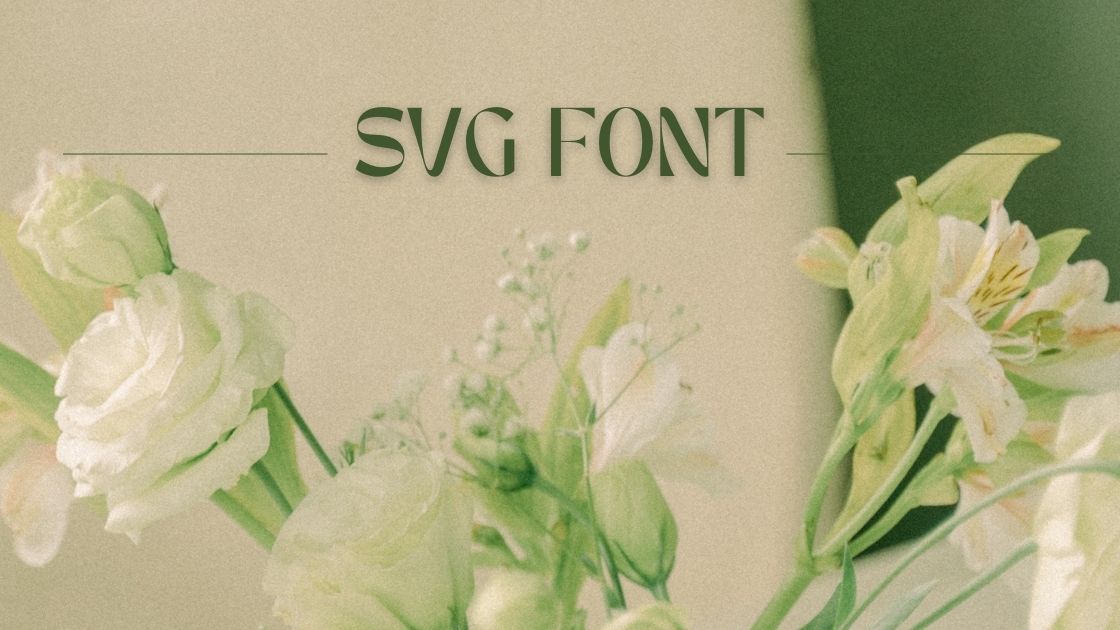Typography, an artful dance of letters and shapes, has evolved with technological advancements, giving rise to various font formats. In the digital realm, one intriguing variant is SVG Fonts. If you find yourself pondering, “What are SVG Fonts?” this comprehensive exploration delves into the intricacies of SVG fonts, unraveling their significance, creation process, and their role in the dynamic landscape of digital design.
Contents
A Primer on SVG Fonts:
Definition and Distinction:
SVG, or Scalable Vector Graphics, is a versatile XML-based format used to depict two-dimensional vector graphics. SVG Fonts, as an extension of this format, redefine how fonts are represented and utilized on the web. Unlike traditional font formats like TrueType or OpenType, SVG Fonts leverage the power of vectors to define each character, enabling scalability without loss of quality.

Scalability and Resolution:
One of the primary advantages of SVG Fonts lies in their scalability. Traditional font formats, when scaled, may lose clarity or appear pixelated. In contrast, SVG Fonts maintain sharpness and clarity at any size, making them ideal for responsive web design and various digital applications.

Creation of SVG Fonts:
Manual Creation:
SVG Fonts can be crafted manually by designing each glyph using vector graphic software like Adobe Illustrator or Inkscape. Designers have the freedom to infuse creativity into each character, ensuring a personalized and unique font style.

Font Editors and Converters:
To streamline the process, font editors and converters dedicated to SVG Fonts have emerged. These tools allow designers to convert existing font files or create new SVG Fonts efficiently. This approach combines the precision of vector graphics with the convenience of font creation tools.

Integration and Usage:
CSS and Inline SVG:
Integrating SVG Fonts into web design is a seamless process, often accomplished through Cascading Style Sheets (CSS) or inline SVG. CSS enables the styling of text elements with the defined SVG Font, while inline SVG incorporates the font directly within the HTML, offering a self-contained solution.
Browser Compatibility:
While SVG Fonts were widely supported in the past, modern browsers have shifted focus to other font formats like WOFF (Web Open Font Format). However, with the aid of polyfills or fallback mechanisms, SVG Fonts can still be utilized to ensure compatibility across a range of browsers.
Pros and Cons of SVG Fonts:
Advantages:
- Scalability: As mentioned, SVG Fonts excel in maintaining clarity and quality at various sizes.
- Creative Freedom: Designers have the liberty to create intricate and unique characters, exploring innovative typographic expressions.
Disadvantages:
- Browser Support: Limited support in modern browsers necessitates additional considerations for compatibility.
- File Size: SVG Fonts may result in larger file sizes compared to more optimized font formats, potentially impacting page load times.
Future Trends and Alternatives:
Evolution of Font Formats:
As technology progresses, font formats continue to evolve. Modern alternatives like WOFF and WOFF2 offer a more optimized solution for web typography, addressing some of the limitations of SVG Fonts. Designers and developers are increasingly exploring these alternatives to enhance performance and user experience.

Variable Fonts:
The emergence of variable fonts adds a new dimension to typographic flexibility. Unlike SVG Fonts, variable fonts allow for dynamic adjustments in weight, width, and other attributes, providing a more efficient and versatile solution for responsive design.

In the dynamic realm of digital design, SVG Fonts carve a unique niche, offering scalability and creative freedom. While their usage has evolved with changing browser standards, designers and developers continue to explore the possibilities they present. Understanding what SVG Fonts are, their creation process, and their pros and cons empowers creatives to make informed decisions in selecting the most suitable font formats for their projects. As technology advances, the world of typography will undoubtedly unveil even more innovative solutions, shaping the visual language of the digital landscape.
This article has delved into the intricacies of “What are svg fonts?”. I trust that the information provided has been insightful and beneficial for you. As you continue to explore this subject, feel free to refer to the following articles for additional perspectives and knowledge. Remember, the journey of learning is perpetual, and I hope these resources contribute to your ongoing pursuit of expertise in “What are svg fonts?”. Happy reading and continued success in your endeavors!
A Comprehensive Guide on How to Create SVG Logos in Photoshop
How to Make an SVG in Inkscape: A Step-by-Step Guide
A Step-by-Step Guide on How to Make a Picture into an SVG for Cricut

